Search results for 'wax'
-
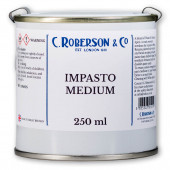
Roberson Impasto Medium
Starting at: £15.50
Roberson Impasto medium is a crack-resistant medium for impasto effects. It retains palette knife and brush strokes, giving the paint sharp, defined edges. It remains thick and doubles paint easily, drying to a matte finish. To retain colour strength, mix one part medium to one part oil colour.
Contains: Stand Oil, Damar Resin, Turpentine, Bleached Beeswax.
Learn More -
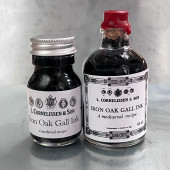
Cornelissen Historical Inks, Iron Oak Gall
Starting at: £9.00
Exclusive to Cornelissen, our intense black Iron Oak Gall Ink is made to a medieval recipe using oak galls collected in Cambridgeshire. The small, handmade batches are blended to give the required consistency and strength, and are steeped for several weeks and left to ‘mature’ for several more. Lightfast and fully waterproof 5-7 days after application, Oak Gall Ink has been used for centuries by calligraphers and scribes to create illuminated manuscripts and legal documents. When used on animal skins such as vellum, the acids in the Oak Gall Ink react with collagen, effectively ‘etching’ itself into the surface, hence its permanence. As with all products derived from natural ingredients, there may be slight variations in the colour and consistency of the ink due to seasonal changes. Not Suitable for fountain pens.
Learn More -
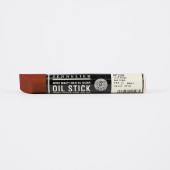
Sennelier Oil Sticks
Starting at: £7.65
Solid artists' quality oil paint sticks. (Ø = 3/4 ; length = 5" ) SENNELIER Extra-Fine Solid Oil Sticks can be used alone or in combination with to oil colours in tubes. The oil stick colours can be used for an entire painting. They are applied directly to any traditional oil-painting support, such as canvas, wood panel or fine art paper. They need the same archival priming (acrylic gesso or oil ground) that oil paint requires. Surfaces: Before use, the surface film of the oil stick must be peeled off. It will form again after a few days of non-use, protecting and conserving the color. The oil sticks must be applied in a thin film application of no more than 1mm thick. Once applied they can be painted over with oil stick or oil paint and if desired be diluted with turpentine. Oil stick Medium, a colorless oil stick, may be used to produce transparent effects and glazes. Once applied, the oil stick surface will dry in 2 to 5 days, depending on the atmospheric conditions Varnishing: If varnishing is desired, you must wait 6 months (as in traditional oil paint) until the colour is completely dry, before giving the painting a final coat of picture varnish. Use a soft brush to varnish so that the oil stick marks are not disturbed. SENNELIER Extra-Fine Solid Oil Stick colours are either opaque (O) or transparent (T) depending on the nature of the pigment in each colour. Oil Sticks do not change during storage and require no special precautions except to be kept away from any source of heat, which could adversely affect the stick. Application Techniques After applying the colour with the point or the edge of the oil stick, colours can be mixed directly on the support using the following methods: • Blending, with brush, finger, or drawing stump. With or without turpentine • Wash-drawing, dilute colours with turpentine or mineral spirit • Retouching, with oil stick, palette knife or brush • Textures, thick application oil stick colour. Retouch with a brush or palette knife •Sgraffito, scratching a layer of fresh paint with a point (brush handle, palette knife, etc.) to reveal the layer below. Sgraffito is related to engraving, and is used not only for revealing the under-layers of paint but also to scratch and clean unsatisfactory parts of the painting •Interior Decoration, on glass, ceramics etc. Use for decorative purposes only Learn More -
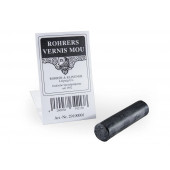
Rohrer & Klingner Soft Ground 16g
£17.40Soft ground is a soft wax mixture for soft ground and cotton ground techniques. The warm ground plate gets coated with suet, which is then wiped off, leaving only a thin film. The soft ground is then applied on the warm plate and spread evenly with a small leather roller. Learn More -
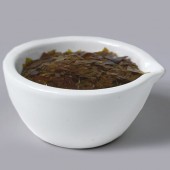
Orange Shellac
Starting at: £8.00
Shellac is a natural resin that is deposited by the female lac insect on the branches of trees in India and Thailand. It is soluble with alcohol, but not with mineral spirits or turpentine. It forms a tough yet flexible film, with many applications. It is suitable as a top coat for gilding when applied thinly, a sealant for porous surfaces, an isolating layer for tempera paintings, a base for pigmented inks, a protective layer for collograph plates, and a warm varnish for wooden floors and furniture. As it is prone to darkening with age, it is not recommended as a varnish for oils, and its solubility can reduce over time. There are various grades of shellac. When mixed with alcohol, it may initially form a cloudy mixture, due to traces of wax in the shellac, but this should become clear once it has dried. The highest grades of shellac are Clear Dewaxed Shellac, which has been de-coloured using the carbon filtering method, Lemon Shellac, and Orange Shellac, which are pale in colour. Button Shellac is less refined and therefore produces a reddish varnish. It was, in fact, widely used as a red dye before synthetic dyes became available. Learn More -
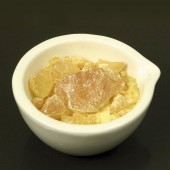
Colophony
Starting at: £7.30
Colophony is a by-product of the distillation of turpentine. It is soluble in most solvents, but considered an adulterant in varnishes and paints, as it forms a weak surface that is prone to darkening and cracking. It is, however, a key ingredient in wax-based etching grounds, imparting hardness, and can be used in powdered form (rosin) to make aquatints. Learn More -
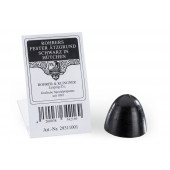
Rohrer & Klingner Black Etching Ground Cap
£9.50Black etching ground in cap form consists of an easily meltable wax that is also solvable in spirits of turpentine. After being molten, the wax can be spread evenly over the plate with the help of a roller or a pad. Learn More -
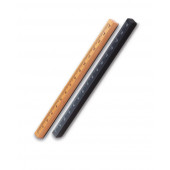
Alder Ruler
Starting at: £5.30
Classic 1960's design. Made from solid alder. 15cm. Available in natural waxed or black stained alder. Learn More -
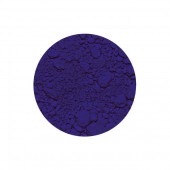
Ultramarine Blue Light Pigment
Starting at: £6.00
PB29
Ultramarine Blue Light is an artificial mineral pigment that is produced by heating clay, soda, sulphur and coal to high temperatures. Its name comes from outremer, or over-the-sea, as a reference to the highly-prized Lapis Lazuli pigment which had been imported into Europe from Afghanistan since the Middle Ages. First manufactured in France and Germany in 1828, synthetic Ultramarine provided a brilliant and affordable blue to artists, and it remains one of the most popular blues on artists' palettes today.
It is a transparent pigment, with a high tinting strength and excellent lightfastness. It reacts to alkali, therefore it is not suitable for use in lime-fresco; we do offer a Limeproof Ultramarine Blue for this purpose. It is stable in all other media, although it can be tricky to grind in oil. Instead of creating a thick, buttery paste, it can remain stringy and deteriorate when stored in a tube. To correct this, many commercial paint manufacturers include additives and waxes in their recipes; if you intend on grinding your own paint, you could try replacing 10-15% of your Linseed Oil with Poppy Oil to improve the consistency. Ultramine Blue provides a slow-drying, fairly hard paint film, which can tend towards brittleness.
Toxicity B
Learn More -

Button Shellac
Starting at: £8.40
Shellac is a natural resin that is deposited by the female lac insect on the branches of trees in India and Thailand. It is soluble with alcohol, but not with mineral spirits or turpentine. It forms a tough yet flexible film, with many applications. It is suitable as a top coat for gilding when applied thinly, a sealant for porous surfaces, an isolating layer for tempera paintings, a base for pigmented inks, a protective layer for collograph plates, and a warm varnish for wooden floors and furniture. As it is prone to darkening with age, it is not recommended as a varnish for oils, and its solubility can reduce over time. There are various grades of shellac. When mixed with alcohol, it may initially form a cloudy mixture, due to traces of wax in the shellac, but this should become clear once it has dried. The highest grades of shellac are Clear Dewaxed Shellac, which has been de-coloured using the carbon filtering method, Lemon Shellac, and Orange Shellac, which are pale in colour. Button Shellac is less refined and therefore produces a reddish varnish. It was, in fact, widely used as a red dye before synthetic dyes became available. Learn More -
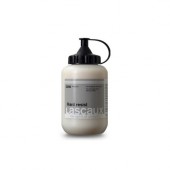
Lascaux Hard Resist 500ml
£45.60This resist is painted onto the plate in a thin even layer with a soft flat square-ended brush. When this clear layer is dry it may be coloured or drawn into with etching needles, roulettes and steel wool. The waxy character allows the needle to glide through its surface. After drawing the coloured coating (if used) is removed, the image is stopped out if necessary, then the plate is etched. As the resist is clear the artist can monitor the etching process accurately. Learn More -
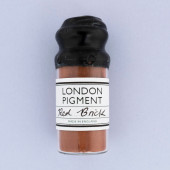
London Red Brick Pigment
£18.00Call to Order
Made from pulverised historic London bricks collected from the foreshore of the Thames near Tower Bridge and Wapping this deep red pigment is essentially a variety of red ochre. During the Victorian era, London Clay was dug up and fired on construction sites to produce the building materials for the city. Red brick pigment has a medium grain size and is opaque. Learn More
-
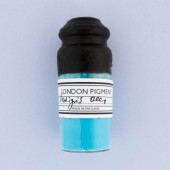
Verdigris Deep Pigment
£22.00Call to Order
Made to a historical recipe, this Verdigris, unlike others available, has been doubly distilled and therefore more stable than basic Verdigris. This rich green is a translucent pigment with a fine grain.
Follow @londonpigment on Instagram for an insight into the stories behind the colours and how she makes them.
NOTE: many of these colours are made in extremely limited batches so please email us at info@cornelissen.com for further information on what is currently available.
Learn More -
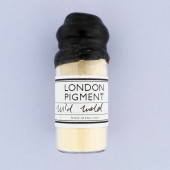
Wild Weld Pigment
£22.00Call to Order
This lake pigment is made from the seeds, leaves and stem of the weld plant (Reseda Luteola) and for a natural dye based pigment is an incredibly lightfast warm yellow. Weld was used extensively throughout the 1700s -1800s to dye textiles and when mixed with verdigris the resulting grassy shade is known as the historical colour ‘Lincoln’s green’. Weld is a rare pigment to use as the pigment is not featured in many paint ranges due to its availability. Also many pigment suppliers will not have it as part of their offering. This pigment is made by extracting the soluble dye material from the plants and converting it into insoluble pigment, this is known as the leaking process. It comes in a 20 ml glass bottle with cork and wax seal. Learn More




